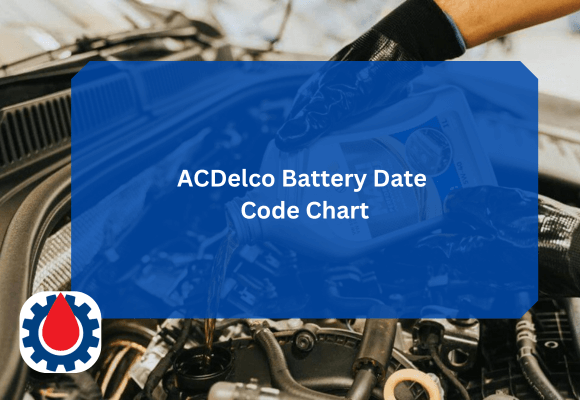When your vehicle flashes that dreaded “Check Engine Oil” light, it’s natural to wonder: Is low engine oil the same as an oil change? While both relate to your vehicle’s lubricant system, they serve very different functions. Let’s break it all down.
Is Low Engine Oil the Same as an Oil Change
No, low engine oil is not the same as an oil change. Low engine oil refers to the oil level being below the required amount, which can happen due to leaks, burning oil, or infrequent checks. In this case, topping off the oil may temporarily resolve the issue, but it doesn’t address the overall condition of the oil in the system.
An oil change, on the other hand, involves completely draining the old, dirty oil, replacing the oil filter, and refilling it with fresh oil. This process removes contaminants and ensures proper engine lubrication. Simply adding more oil doesn’t clean the engine or restore the oil’s protective qualities, making regular oil changes essential for engine health.
Related Does Service Engine Soon Mean Oil Change(Explained)
What Does It Mean When Engine Oil Is Low?
When your dashboard indicates low oil, it means the quantity of oil in the reservoir is below the recommended level. This could be due to a leak, burning oil, or not topping up between changes.
Signs Your Engine Oil Is Low
- Oil pressure warning light
- Unusual engine noise or knocking
- Burning oil smell
- Engine overheating
- Sluggish acceleration
Causes of Low Engine Oil
- Oil leaks (from gaskets, seals, or the pan)
- Excessive oil consumption
- Long gaps between oil checks
- Engine wear and tear
Related Oil Change Interval Calculator
What Happens If You Just Top Off Low Oil?
Topping off low oil simply adds fresh oil to bring it up to the proper level. However, this doesn’t remove the old, dirty oil or filter out harmful debris. It’s a quick fix, not a solution.
What Is an Oil Change?
An oil change is a complete replacement of old engine oil with new oil, often accompanied by replacing the oil filter. It’s part of your vehicle’s routine maintenance and essential for engine longevity.
Full vs. Partial Oil Change
- Full Oil Change: All old oil is drained and replaced.
- Partial Top Off: Only adds oil—doesn’t clean or filter.
Related Is Engine Flush Before Oil Change Worth It(Dos & Dont)
Steps Involved in a Professional Oil Change
- Draining the old oil
- Removing the old filter
- Installing a new filter
- Adding new oil to specifications
- Checking for leaks and levels
Is Low Engine Oil the Same as Needing an Oil Change?
No, they are not the same.
Low engine oil refers to the oil level, while an oil change refers to the quality and cleanliness of the oil. Topping up may temporarily fix the level, but it doesn’t improve oil quality.
Related Will an Oil Change Increase Gas Mileage(Experts Agree on This)
Why Simply Topping Off Oil Isn’t Enough
Even if you top off your oil, contaminants remain in the system. Dirty oil thickens and becomes less effective. Over time, this causes:
- Reduced engine performance
- Increased wear
- Sludge buildup
- Potential engine damage
How Often Should You Change Your Engine Oil?
It depends on your car, driving conditions, and oil type. However, here are common intervals:
- Conventional Oil: Every 3,000–5,000 miles
- Synthetic Oil: Every 7,500–10,000 miles
Related Engine Oil Change Soon(Here’s How Long You Can REALLY Wait!)
The Role of the Oil Filter in Oil Changes
The oil filter traps dirt and metal particles from entering your engine. If it’s not changed, even new oil can become dirty fast. Think of it as the liver of your engine.
While topping off is cheaper short term, skipping oil changes can lead to expensive engine repairs later.
Risks of Ignoring Low Engine Oil or Delaying Oil Changes
- Engine seizure or failure
- Poor fuel efficiency
- Increased emissions
- Costly mechanical repairs
- Voiding the vehicle warranty
Best Practices for Monitoring Engine Oil
- Check oil monthly or before long trips
- Park on a level surface
- Use a dipstick to check the level and color
- Schedule oil changes regularly
- Use the oil type recommended by the manufacturer
Related Hydraulic Oil vs Engine Oil(Complete Side by Side Differences)
Recommended Oils and Resources
Always use the grade and type of oil specified in your car manual. Trusted brands include:
- Mobil 1 (Oil Guide)
- Castrol
- Valvoline
- Pennzoil
FAQs
Can I drive with low engine oil?
It’s risky. Low oil can overheat or damage your engine. Add oil immediately or schedule a change.
Will an oil change fix low oil pressure?
Often yes, if old oil is the cause. But if the pressure remains low, it could indicate a deeper issue.
Can I skip oil changes if I top up regularly?
No. Topping up doesn’t remove old oil contaminants or replace the oil filter.
How do I know if I need an oil change or just a top-off?
Check the oil’s color and consistency. Dark, sludgy oil = change. Light and clear = maybe just top-up.
Is synthetic oil better than regular oil?
Yes. Synthetic oil lasts longer, resists high temperatures, and flows better at cold temps.
What happens if I overfill my engine oil?
Too much oil can cause foaming, reduced lubrication, and damage to seals or the catalytic converter.
Final words
So, is low engine oil the same as an oil change? Absolutely not. One fixes the level, the other fixes the health of your engine. For optimal performance and long engine life, never treat a top-off as a replacement for a full oil change. Keep your engine running smoothly, check your oil regularly, and stay on top of your vehicle’s maintenance schedule.




